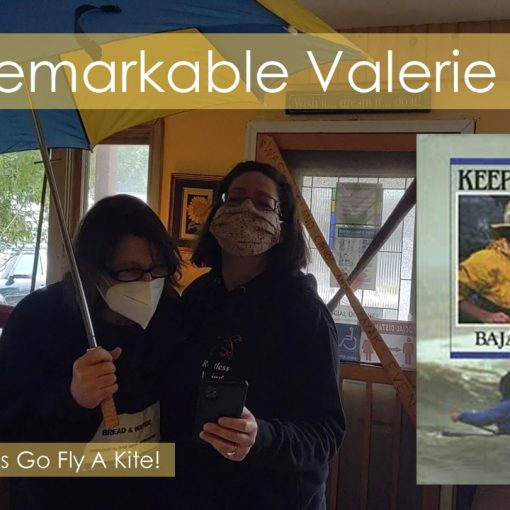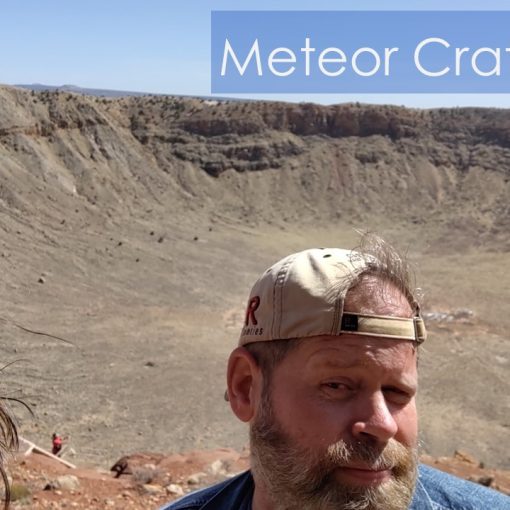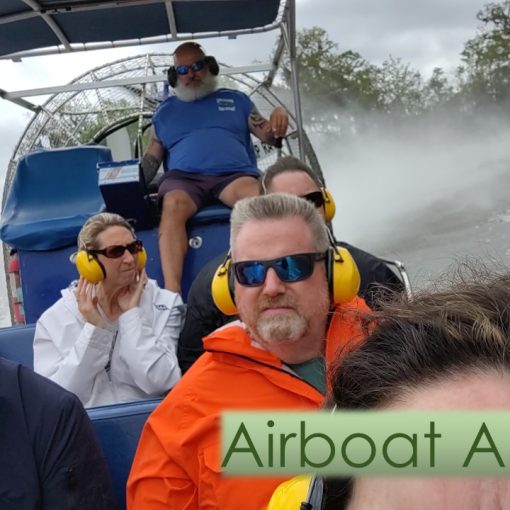We crossed vast plains of New Mexico in April (2021). Cattle were grazing on sparse shrubs along the dry land. They seemed to furrow their brows in our direction as they chewed as if we were invading their space.
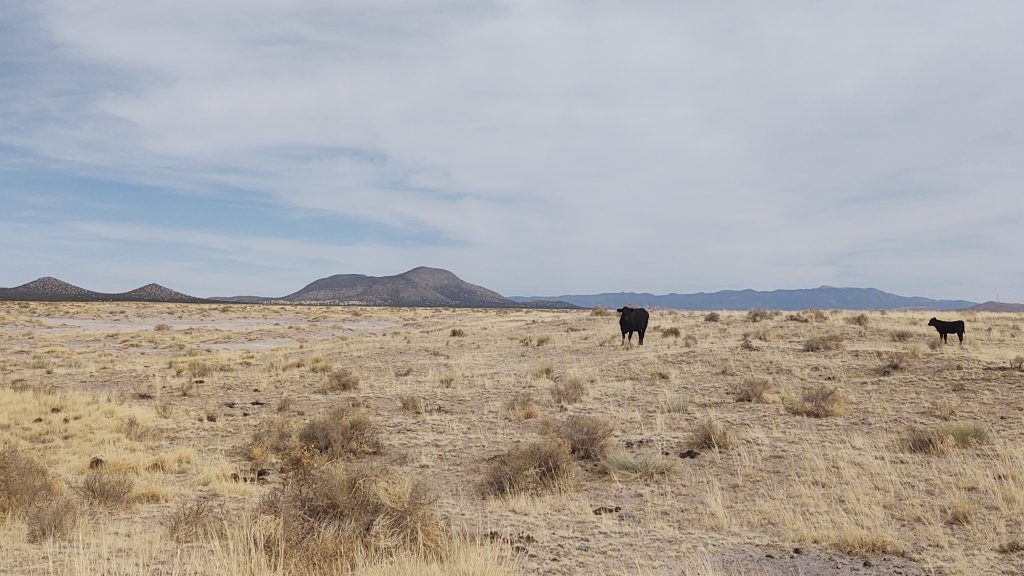
Soon this scruffy land opened to a desolate white plain that spread before us for miles. This was White Sands. It reminded me of climbing the Lake Michigan sand dunes, but this landscape met mountains in the far distance. The fine, soft ‘sand’ reminded me of weddings when the bride and groom pour colored sand in a jar.
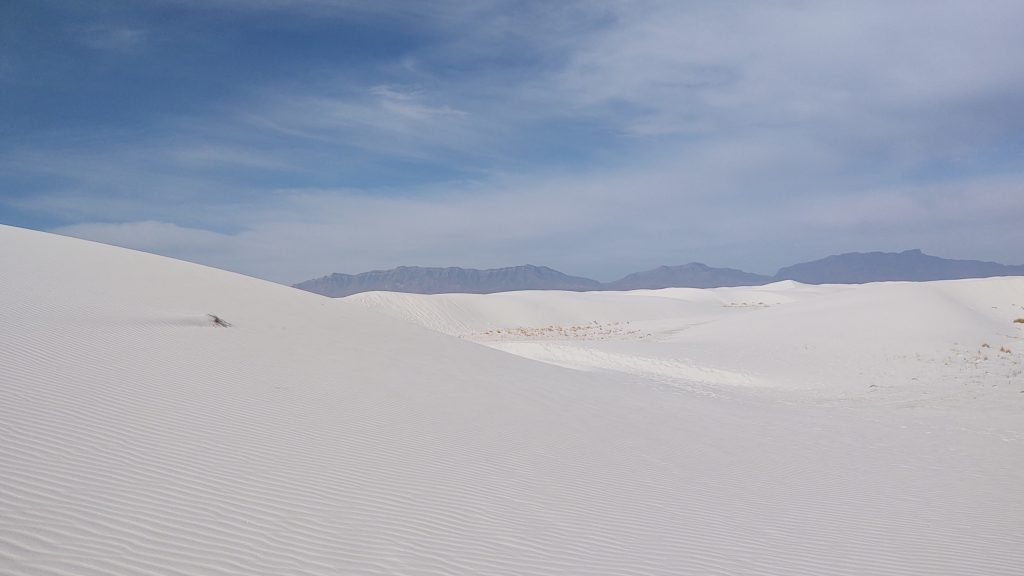
White Sands, New Mexico is a remarkable gypsum dune field covering 275 square miles. This creamy white “sand” (gypsum) is a natural wonder rising from the Tularosa Basin. We learned that gypsum is used in many products and that several different species survive in this desert environment.
What is this white sand?
The ‘sand’ is Gypsum and actually cold, even in the sun. Gypsum doesn’t absorb heat like silica can. Silica is along Lake Michigan’s shoreline and can burn the bottom of one’s feet. I had prepared myself for a hot surface by wearing shoes. Soon, my footwear was filled as the teeny white particles sifted into my footwear. The result it was much more difficult to climb the hill. The hot air and the cold terrain made me feel as if I was on another planet!
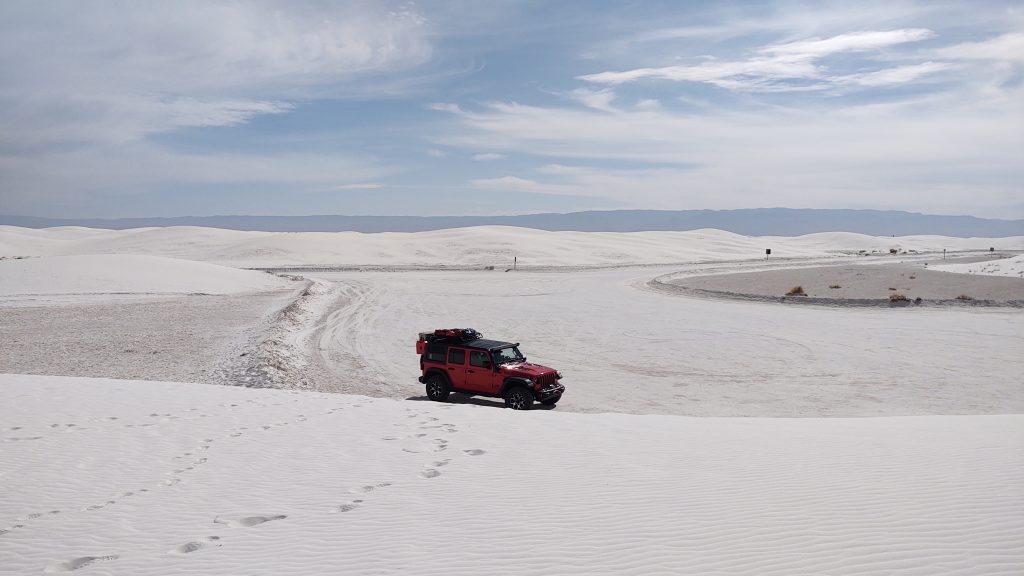
How were the gypsum dunes formed?
These dunes formed from an ephemeral lake which had a very high mineral content. As a result when the water evaporated, it left hydrous calcium sulfate, pure gypsum.
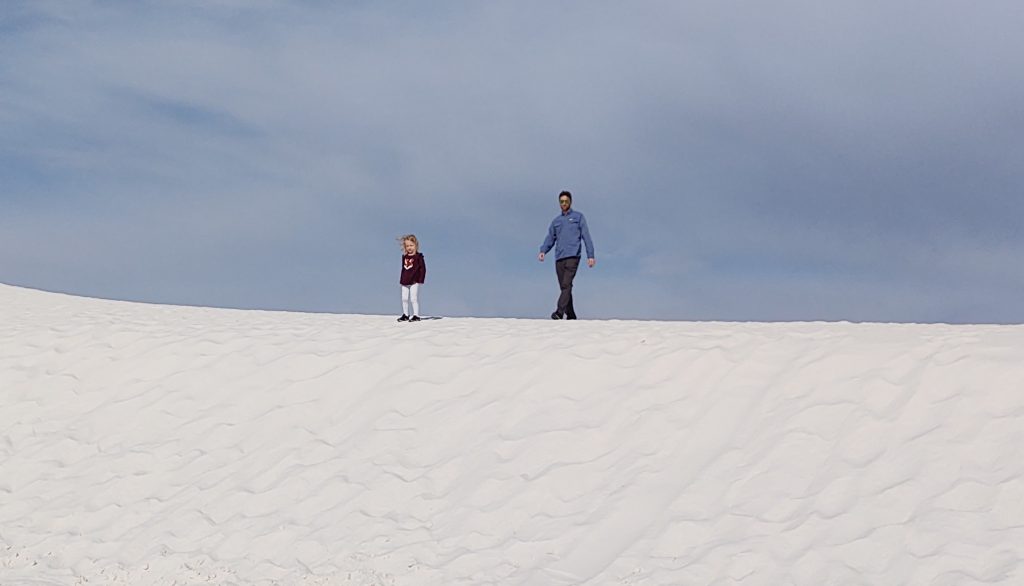
The wind marked it’s path across the surface of these mounds. These sand toys were left here less than an hour before our arrival. I made sure these play things found new owners by bringing them with us.
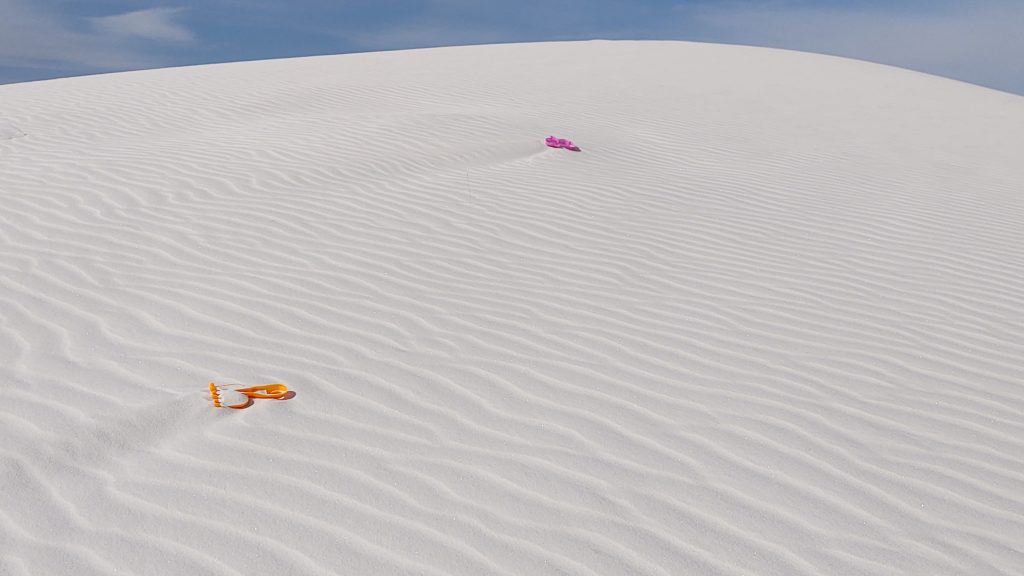
White Sands History
Tom Charles was an advocate for these gypsum dunes from the start in the early 1900’s. He filed petitions to protect this unique strata. In 1933, President Herbert Hoover finally declared this land a National Monument. The area was designated to preserve this natural resource and the wildlife that depended on it.
In 1942 a military base was constructed nearby. In fact, when we arrived, the access road was blocked off. The guard informed us, “There has been a rocket test this morning, so the opening of the area would be delayed.” Rocket? I was curious, but details were not shared. As we waited I took the opportunity to peek in the gift shop!
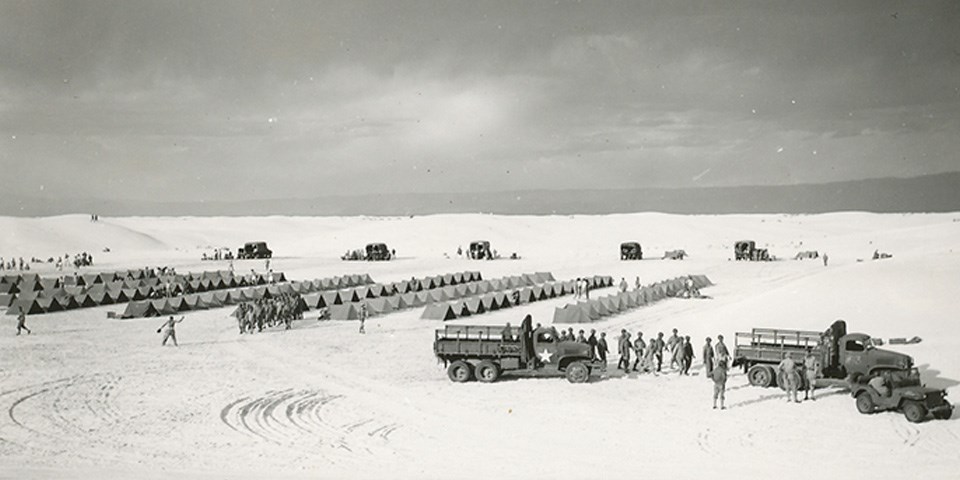
Photo Courtesy of The National Parks Service
In 1945 the first atomic bomb was tested at Trinity Site, 60 miles north of the monument. Tim, a bartender at Washington Island, who had worked at Area 51, explained that this testing resulted in severe injuries to workers. These maimed staff members where kept comfortable at Area 51. For fear that their injuries would frighten the public. This population was hidden in the secretive base. Family members were allowed to visit, but it was kept highly guarded from the public due to the government’s worry about protests and, Tim believes, their embarrassment.
This unique site has been the backdrop for movies since the late 1940’s: Four Faces West (1948), Hang ‘Em High (1968), The Hired Hand (1971), My Name Is Nobody (1973), Bite the Bullett (1975), and Young Guns II (1990). A few music videos were shot at White Sands as well, including Lady Gaga’s, “911” in 2020.
Wildlife
Sitting on the gypsum dune had me pondering this substance and wondering what lifeforms could inhabit this territory.
I was shocked to learn that there are around 800 different animal species that survive in this harsh environment. Invertebrates rank with the highest at 600 varieties. This includes spiders, beetles, moths and wasps. There are 220 different birds, including my favorite, The Roadrunner!
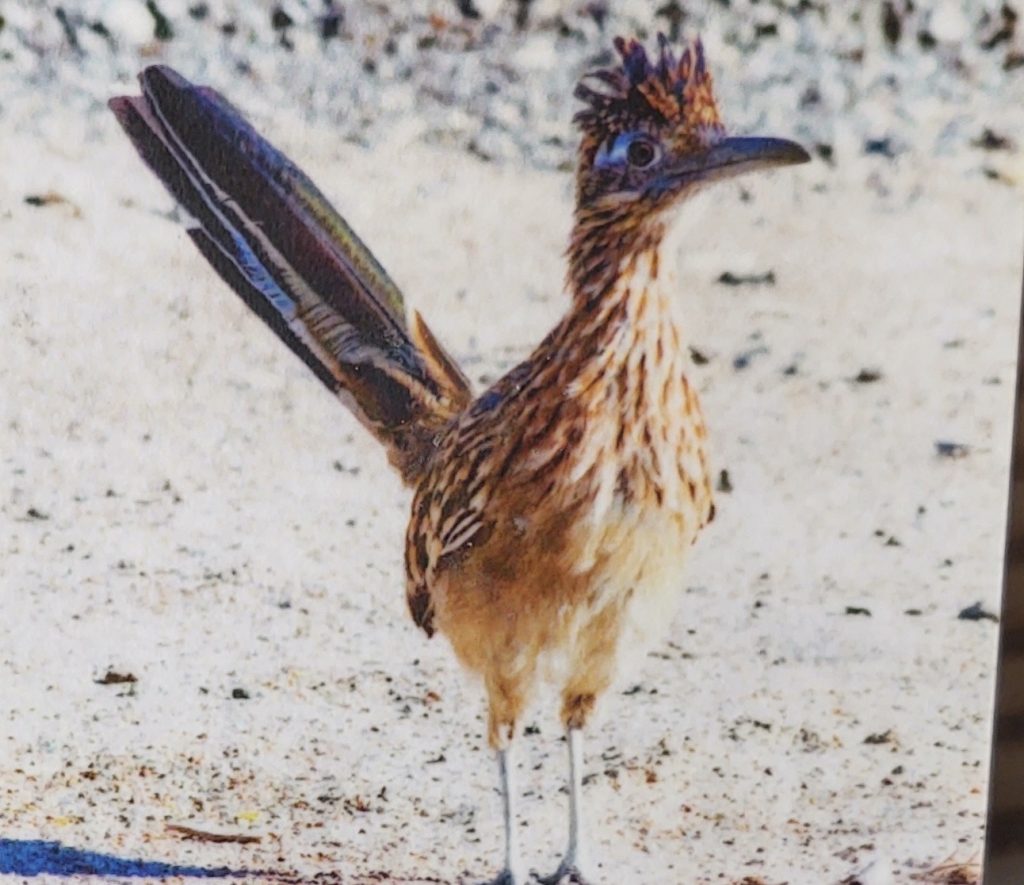
White Sands is home to several mammals: bobcats, coyotes, rabbits, porcupines and rodents. 93 African Oryx were released in 1969. Occasionally one is spotted in the area. There are seven varieties of amphibians. A few types of lizards and snakes capture the reptile category. There’s only one fish species, the pupfish, that calls White Sands home.
Gypsum Uses
Did you know that gypsum is used in many household items? Expectedly, gypsum is used in drywall and casts for broken limbs. Surprisingly, gypsum is used in bread, cheese, ice cream, toothpaste, wine and beer!
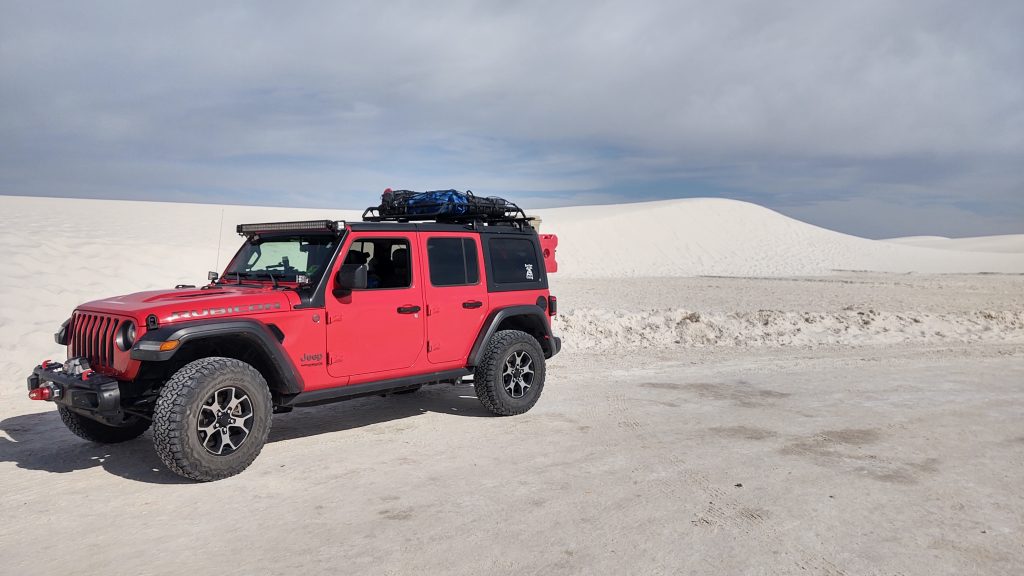
White Sands National Monument is worth taking a loop southward in New Mexico. It’s known as “The Land of Enchantment.” Bring a sled or you may rent one from the gift shop. It is unusual, desolate and fun to explore!
Join us on more adventures by subscribing to www.restless-viking.com! Take a look at our videos on YouTube! We have merchandise in our online store: https://restless-viking.myshopify.com/
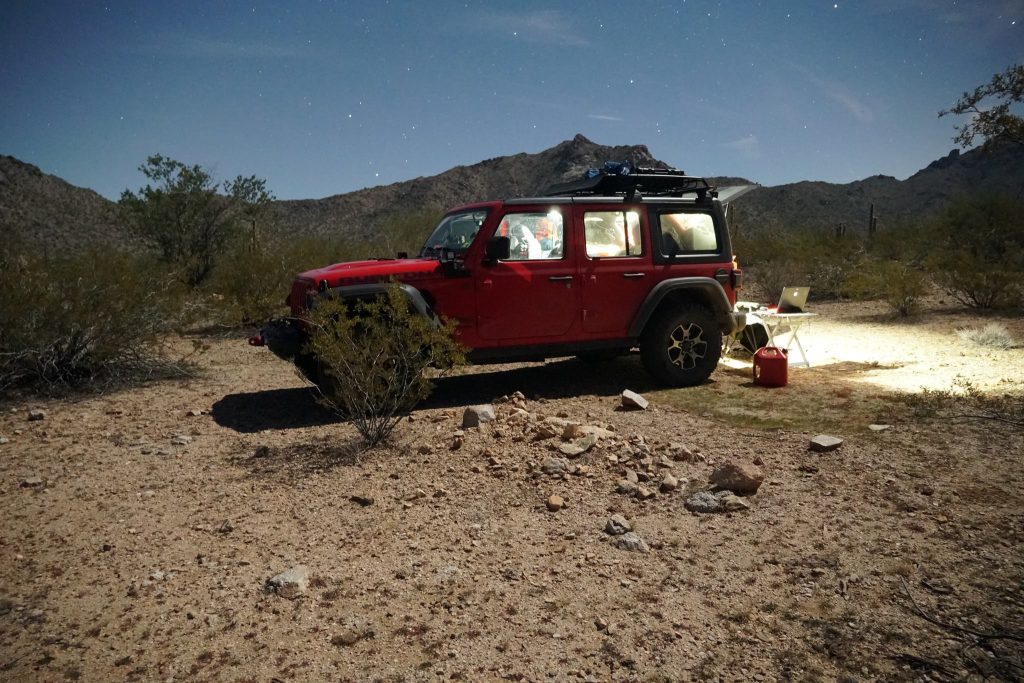
Resources
https://www.nps.gov/whsa/index.htm
https://www.newmexico.org/places-to-visit/regions/southeast/white-sands-national-monument/



